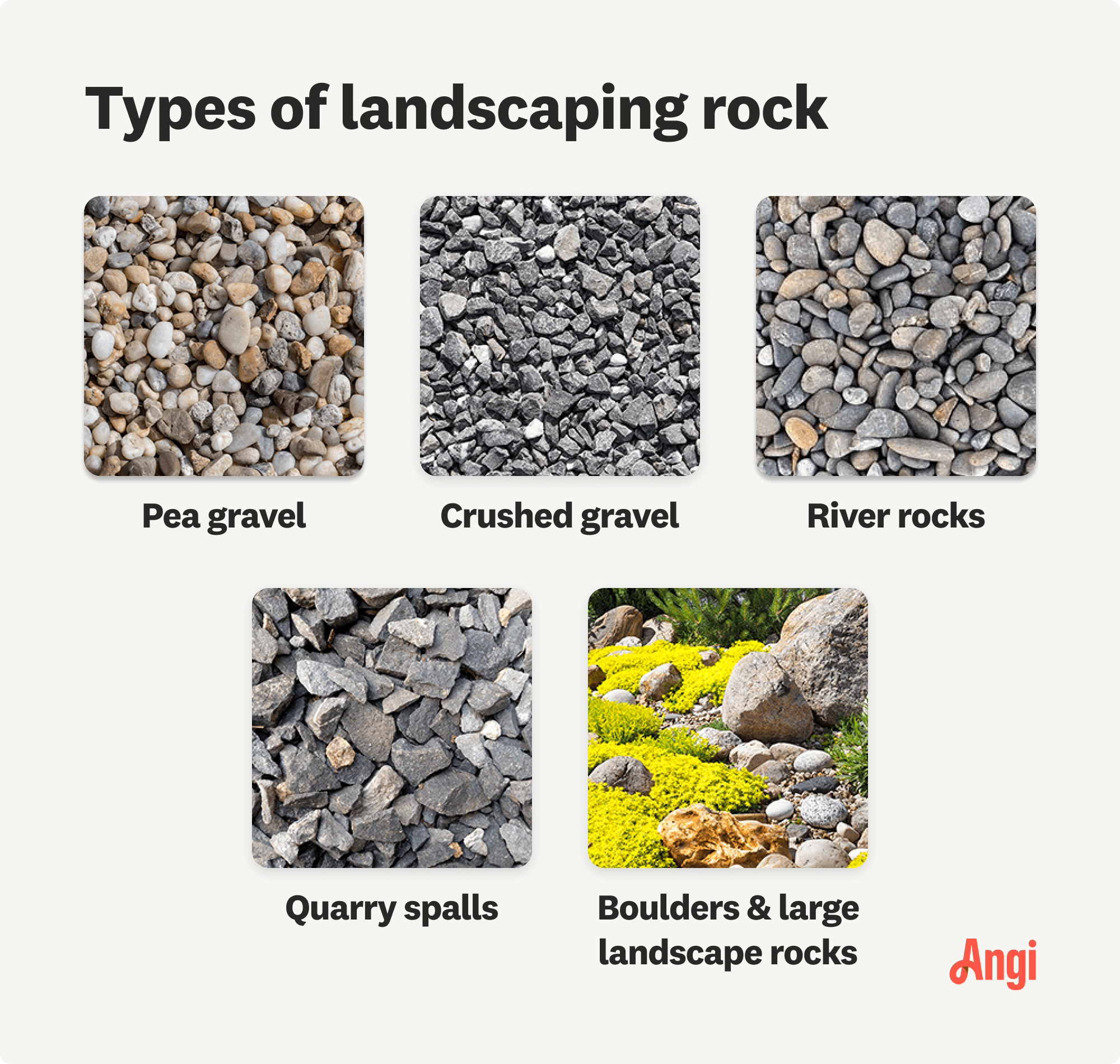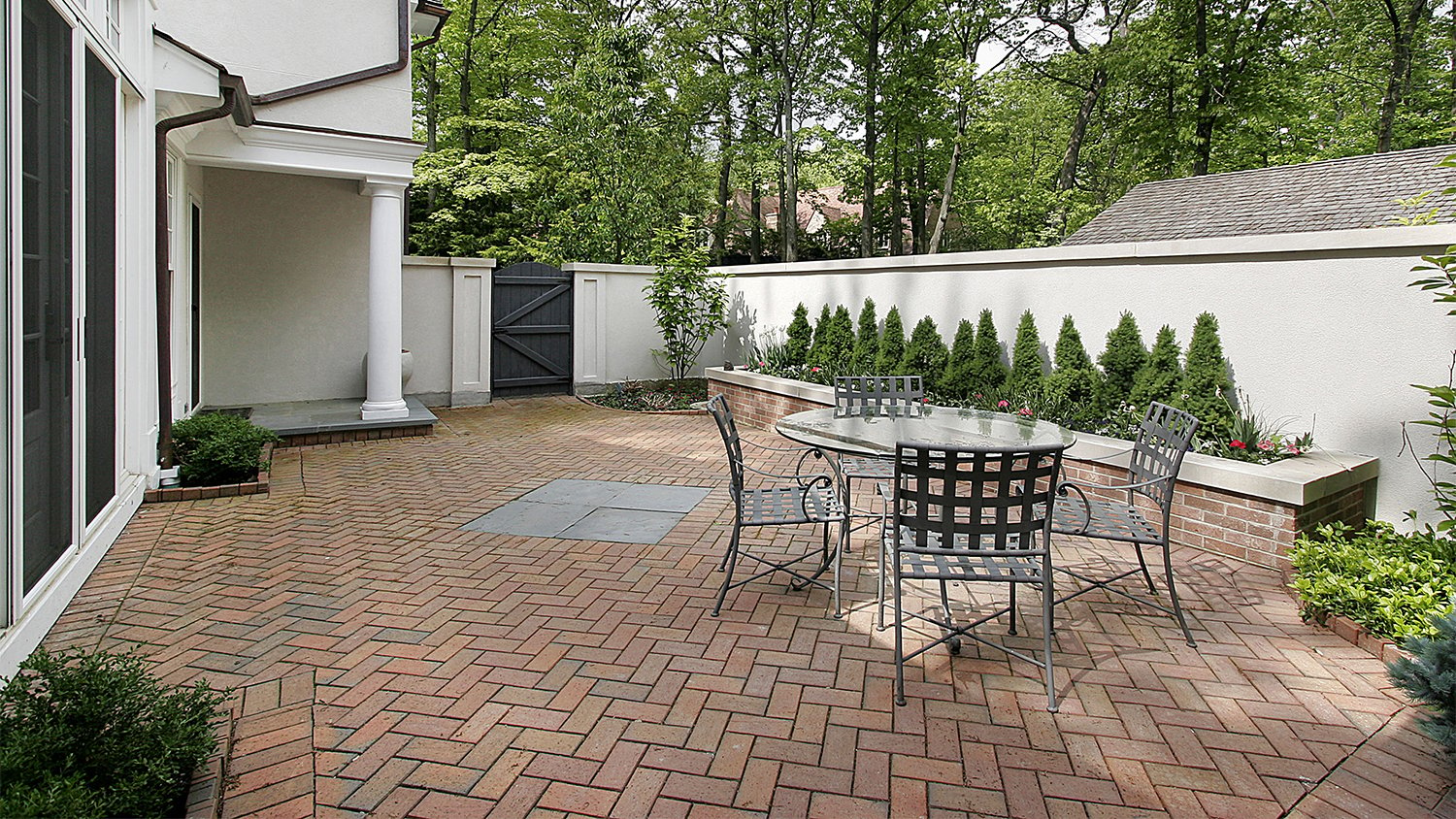What Size River Rock Is Best for Landscaping? Choosing the Right Size Rock for Your Project
Here’s how to rock your next landscaping project


Landscaping rock includes gravel, river rocks, and boulders.
Use river rocks for water features, walkways, and gardens.
Carefully choose the right rock for your landscape or garden.
Look to nature for inspiration when placing rocks in your yard.
You’d think choosing landscaping rocks for your project would be the easy part of the job, but with so many colors, types, shapes, and sizes available, the options are nearly unlimited. The type of rock you choose can change how your landscaping looks and functions—a large boulder can act as a centerpiece, while crushed gravel can fill in pavers. We discuss what size river rock is best for landscaping and how to make the right decision for your project.
Understanding Landscaping Rock Types and Sizes
Rock suppliers divide types of landscaping rocks into categories based on size and shape. Below, we discuss common categories and how landscapers use each.

| Type of Landscaping Rock | Most Common Size |
|---|---|
| Pea gravel | ⅜ inch and smaller |
| Crushed gravel | ⅝ inch and smaller |
| River rocks | 1–8 inches |
| Quarry spalls | 2–4 inches |
| Boulders and large landscape rocks | Small melon to small car (25–6,000 pounds) |
Pea Gravel
The smallest stone option is pea gravel. Individual stones measure less than ⅜ inch, and they’re common in playgrounds, decorative applications such as fountains, along pathways, and by pools. Gravel prices depend on several factors, including size.
Crushed Gravel
Gravel is a combination of small stones, rock chips, and larger rock dust less than ⅝ of an inch in diameter. Gravel easily fits together and will compact to create a smooth surface that landscapers and DIYers choose for driveways, patios, between pavers, and as a foundation for larger stones.
River Rocks
Traditionally, river rocks for landscaping are small to medium in size, from quarter-sized pebbles to palm-sized rocks perfect for stacking or stepping on. These rocks range from 1 to 8 inches across, with the most common size measuring between ¾ inch and 2 inches in diameter. They are most popular as a decorative element in flower beds, garden pathways, and high-traffic areas where gravel may be too light to hold up against spreading. However, you can use them in rock gardens, water features, and mosaic installations.
A Note on River Rocks
While many people refer to other types of landscaping stones as river rocks, true river rocks are smooth as if worn by flowing water. Most consist of granite, schist, or basalt, and they tend to come in warm, earthy tones such as brown, gray, and beige.
Quarry Spalls
Quarry spalls are 2 to 4 inches in diameter (about the size of a baseball) and are frequently jagged around the edges. Most landscapers use quarry spalls in hardscaping features such as retaining walls or as stabilizers for structures. The smaller-sized stones fit together to create a sturdy base or facade and allow water to filter through.
Boulders and Large Landscape Rocks
These are the largest landscaping rocks, ranging from the size of a melon to the size of a small car and weighing between 25 and 6,000 pounds. Boulders and other large landscaping rocks have many uses, including the following:
Landscape centerpieces
Decorative elements
Retaining walls
Benches or seating
Building foundations, steps, and outcroppings
Large landscaping stones can be costly, so consider your budget and compare prices with river rock costs.
What to Consider When Choosing the Right River Rock Size

River rocks come in so many sizes that choosing the right one for your space can be challenging. While you can make your landscaping look any way you want, there are some tips landscaping designers recommend when choosing the right river rock size for your landscaping project. Here’s what to keep in mind.
Think About the Size of Your Landscaping Project
Whether you’re relandscaping an entire yard or adding a small rock feature to an existing landscape, start by thinking about the size of your project and where the rock fits in. Consider why you’re choosing stone (for visual interest, natural appeal, ease of upkeep, or another reason), where it will go, and what type of rock will best suit your needs and the requirements of the location. Local sand and rock delivery companies near you should have a wide range of materials to fit your plans.
Take Inspiration From Nature
If you’re going for a natural look and want a garden that looks like it just grew like that, it’s smart to look at how stones appear in natural settings. If you can, visit a natural place similar to your plan.
For example, if you are adding a human-made stream to your backyard, visit a natural river (or look at photos) to notice how larger rocks gather at the banks and smaller rocks fill in gaps and line the bottom of the riverbed. Once you know what a natural scene looks like, you can recreate it in your own space.
Consider Rock Size vs. Plant Size
Smaller rocks are the best choice for most applications since they’re small enough to serve as mulch, decorative piles, walkway bases, water feature designs, ground cover, and more. As a bonus, most rocks between 1 and 2 inches in diameter are a good size for balancing plantings and giving visual weight to flower beds without stealing the show.
If you’re selecting river rock for planter boxes, flower beds, and other plant-feature landscaping applications, consider the plants' type and mature size and choose stones that will complement the overall look and feel of the space. Choose smaller rocks if your plants are small or delicate and will be at maturity, and save larger boulders and feature stones for landscaping with bigger plant life.
Consider the Placement
While you can put any rock in your landscapes, certain placements better suit specific stones and landscape designs. The location and features of your existing landscaping can help you decide which rock size to use. Here is some location-based advice to think about.
Water Features
Nothing makes a bigger impact than beautiful river stones for natural-looking water features. Water features often call for medium-sized stones, such as 2- to 5-inch rocks. This size gives you the most options for creating and lining streams, rivers, waterfalls, and pools. Larger stones provide stability and allow water to flow under and around. The available sizes allow you to mix and match stones to create a natural-looking installation—as if nature arranged the rocks.
Walkways
A charming stone pathway makes landscaping feel inviting, and it can save wear and tear on your grass and prevent damage to plants. The best river rocks for walkways and pathways are small, measuring 1 to 3 inches in diameter. This size is easiest to walk on, as it won’t shift as much as smaller stones and will give a more even surface area than larger stones.
Garden Beds
You can use rocks in garden and flower beds in several ways—consider rock borders, river rock mulch, and larger rocks or decorative boulder installations in garden beds to add visual interest. Choose a mix of rocks in medium and large sizes, between 3 and 8 inches.
Along with being an attractive feature, these larger river rocks can help prevent moisture loss and keep weeds from growing. If you live in a drier climate or want a low-water landscape, you can use rocks as part of xeriscaping plantings that still look interesting with no irrigation.
Frequently Asked Questions
The difference between river rock and landscaping rocks is size, smoothness, and use. River rocks are smooth and flat, as if polished by water, and come in diameters between 1 and 8 inches. Landscape rock can vary in size from small pea gravel installations to car-sized boulders. However, landscaping and river rocks are interchangeable in many situations. River rock is best for pathways, walkways, garden bed mulch, water features, and planting accents, while small landscape rocks can serve as a walkway base, gravel playground areas, and filler between pavers.
The best rock to use for landscaping depends on your yard and chosen application. You can choose between gravel, river rocks, quarry spalls, boulders, and large landscape rocks like flagstone slabs, but each has a variety of uses it’s best suited to. For example, crushed gravel washes away easily in flowing water, so river rocks are a better option for water features. Boulders and large landscape rocks are great for features and statement pieces but can overwhelm smaller gardens.
While they’re popular and have a lot of pros, the cons of river rocks include the following:
River rocks don’t break down or provide nutrients to plants.
These stones can get hot and scorch nearby plants.
River stones may heat the surrounding soil to inhospitable temperatures.
Rocks can block rainwater from seeping into the ground if installations are too thick or tightly packed.
Most downsides occur when using river rock as mulch in gardens and flower beds. However, you can still incorporate river rocks into your landscape as long as you use them in the correct ways.





- 28 Creative Rock Landscaping Ideas for Your Backyard
- How to Keep Landscape Rocks in Place
- The Best Rocks For French Drains: What To Know
- How to Dispose of Rocks From Your Yard
- Everything You Need to Know About Rock Gardens
- Mulch vs. Rock: Which One Is Right for Your Landscaping?
- 15 Stepping Stone Walkway Ideas for Backyards, Gardens, and More
- 20 Walkway Ideas to Level Up Your Landscaping
- How to Get Rid of Weeds in Rocks Simply and Safely
- 9 Tips for Landscaping Around Your House to Prevent Flooding










